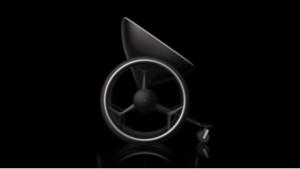South African Industrial designer Mikhail Aymés has had a hand in a number of innovative projects. His Watt bike won the most innovative product award at the Design Indaba Expo in 2015 and he was also part of the team that developed the SOOC Studio, an all-in-one portable photography studio with built in lighting. The studio makes it easy for anyone with basic photography skills to capture great product photos using their smartphones. His latest innovation aims to save people from drowning.
“As a kid I, use to spend a lot of time taking things apart and trying to understand how they worked. I have many memories of disassembling my injection-moulded toys, and always coming up one screw short after putting it back together,” explains Aymés. “I also spent a lot of time in my dad’s workshop where I would make contraptions from bicycle ramps, electric guitars, go-carts and even from a radio. I believe that my passion has been there all along and my tertiary education just taught me how to channel it.”
Aymés is developing the Guardian Drone as part of his industrial design thesis at the Cape Peninsula University of Technology (CPUT) in Cape Town, South Africa. Aymés came up with the idea after hearing a story about two people who had drowned when one of them was caught in a riptide and the rescuer was unable to save himself or the victim. “I decided to investigate how I could leverage drone technology to offer support in these types of situations,” Aymés told eHealth News.
The problem is that drowning victims can be dangerous. In their panic, the victim will instinctively clutch at anything and use it push himself or herself up. This means pushing their rescuer down. This is where Aymés’ drone comes in. The designer came up with a drone delivery system that could deliver a buoyancy aid in an emergency situation, removing the need for the panic response.
“For roughly the past 30 years drones have been used as a weapons delivery systems, but with the rise of the consumer drone the opportunity was ripe for me to use it constructively,” says Aymés.
“The aid can be assembled into a capsule and attached to a drone. The idea is that in the event of someone drowning, the drone can be sent ahead of the lifeguard to drop the capsule into the water near the victim. Upon contact with the water the buoyancy aid automatically inflates providing immediate and effective buoyancy for the victim.”
He goes on to explain that in the event that the victim is unconscious, the aid is designed to make applying rescue breathes easier and more effective than existing lifesaving buoyancy aids.
According to Aymés, the project still needs to be refined. For instance, the drone has a restricted flight time because of its battery life. The designer believes the technology will one day catch up. For now, Aymés is developing additional features such as shark spotting and shark net deployment.
Aymés was an exhibitor at the Design Indaba Expo in 2014 and 2015. He has also recently been accepted into the highly respected Global Innovation Design Program at the Royal College of Art, London.
“I will be studying in the Global Innovation Design Program which is a unique transnational, multi-disciplinary design program that will see me studying in London, Beijing and Singapore,” explains Aymés. “In each city we work on projects addressing food innovation, environmental pollution, education, and the social challenges associated with rapid economic growth and disparity.”







